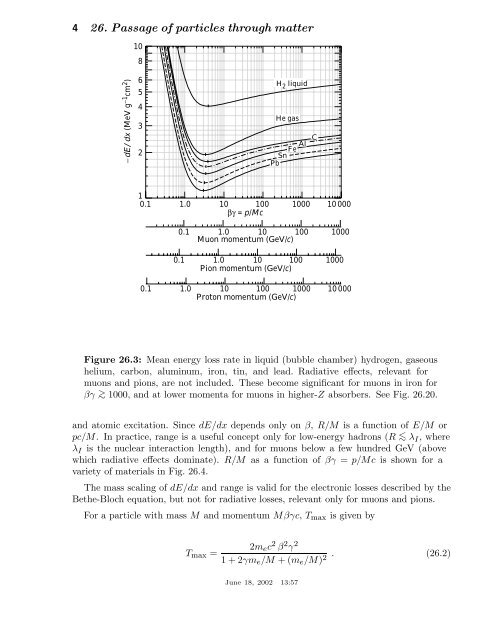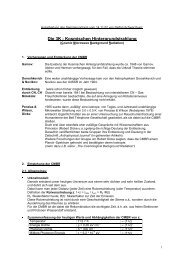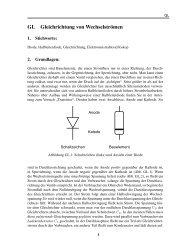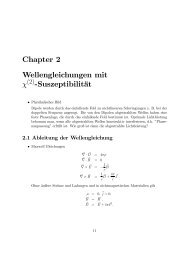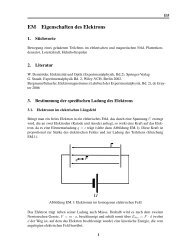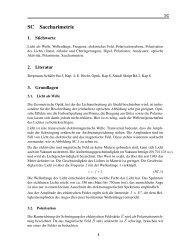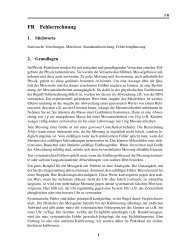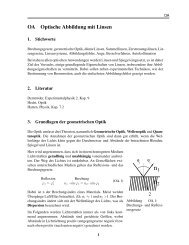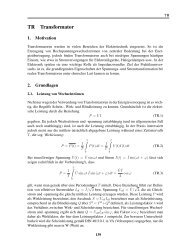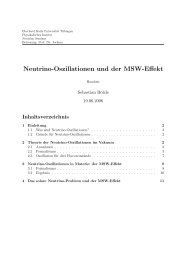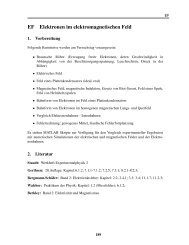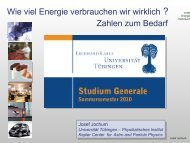26. passage of particles through matter - Particle Data Group
26. passage of particles through matter - Particle Data Group
26. passage of particles through matter - Particle Data Group
You also want an ePaper? Increase the reach of your titles
YUMPU automatically turns print PDFs into web optimized ePapers that Google loves.
4 <strong>26.</strong> Passage <strong>of</strong> <strong>particles</strong> <strong>through</strong> <strong>matter</strong><br />
10<br />
8<br />
− dE/dx (MeV g −1 cm 2 )<br />
6<br />
5<br />
4<br />
3<br />
2<br />
H 2 liquid<br />
He gas<br />
Fe<br />
Sn<br />
Pb<br />
Al<br />
C<br />
1<br />
0.1<br />
1.0 10 100 1000 10 000<br />
βγ = p/Mc<br />
0.1<br />
0.1<br />
1.0 10 100 1000<br />
Muon momentum (GeV/c)<br />
1.0 10 100 1000<br />
Pion momentum (GeV/c)<br />
0.1<br />
1.0 10 100 1000 10 000<br />
Proton momentum (GeV/c)<br />
Figure <strong>26.</strong>3: Mean energy loss rate in liquid (bubble chamber) hydrogen, gaseous<br />
helium, carbon, aluminum, iron, tin, and lead. Radiative effects, relevant for<br />
muons and pions, are not included. These become significant for muons in iron for<br />
βγ > ∼ 1000, and at lower momenta for muons in higher-Z absorbers. See Fig. <strong>26.</strong>20.<br />
and atomic excitation. Since dE/dx depends only on β, R/M is a function <strong>of</strong> E/M or<br />
pc/M. In practice, range is a useful concept only for low-energy hadrons (R < ∼ λ I ,where<br />
λ I is the nuclear interaction length), and for muons below a few hundred GeV (above<br />
which radiative effects dominate). R/M as a function <strong>of</strong> βγ = p/Mc is shown for a<br />
variety <strong>of</strong> materials in Fig. <strong>26.</strong>4.<br />
The mass scaling <strong>of</strong> dE/dx and range is valid for the electronic losses described by the<br />
Bethe-Bloch equation, but not for radiative losses, relevant only for muons and pions.<br />
For a particle with mass M and momentum Mβγc, T max is given by<br />
T max =<br />
2m e c 2 β 2 γ 2<br />
1+2γm e /M +(m e /M ) 2 . (<strong>26.</strong>2)<br />
June 18, 2002 13:57


